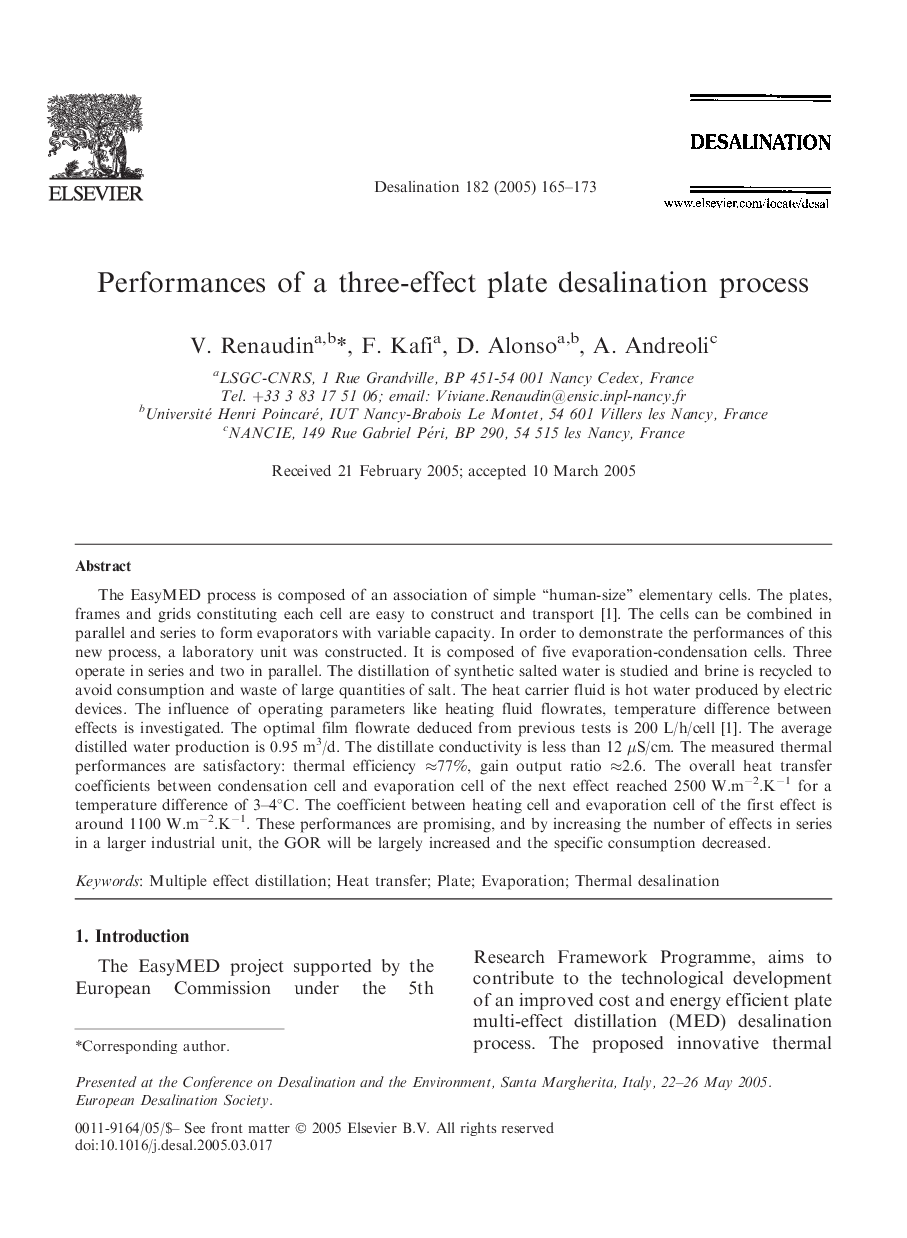| Article ID | Journal | Published Year | Pages | File Type |
|---|---|---|---|---|
| 9680973 | Desalination | 2005 | 9 Pages |
Abstract
The EasyMED process is composed of an association of simple ''human-size'' elementary cells. The plates, frames and grids constituting each cell are easy to construct and transport [1]. The cells can be combined in parallel and series to form evaporators with variable capacity. In order to demonstrate the performances of this new process, a laboratory unit was constructed. It is composed of five evaporation-condensation cells. Three operate in series and two in parallel. The distillation of synthetic salted water is studied and brine is recycled to avoid consumption and waste of large quantities of salt. The heat carrier fluid is hot water produced by electric devices. The influence of operating parameters like heating fluid flowrates, temperature difference between effects is investigated. The optimal film flowrate deduced from previous tests is 200 L/h/cell [1]. The average distilled water production is 0.95 m3/d. The distillate conductivity is less than 12 μS/cm. The measured thermal performances are satisfactory: thermal efficiency â77%, gain output ratio â2.6. The overall heat transfer coefficients between condensation cell and evaporation cell of the next effect reached 2500 W.mâ2.Kâ1 for a temperature difference of 3-4°C. The coefficient between heating cell and evaporation cell of the first effect is around 1100 W.mâ2.Kâ1. These performances are promising, and by increasing the number of effects in series in a larger industrial unit, the GOR will be largely increased and the specific consumption decreased.
Related Topics
Physical Sciences and Engineering
Chemical Engineering
Filtration and Separation
Authors
V. Renaudin, F. Kafi, D. Alonso, A. Andreoli,
